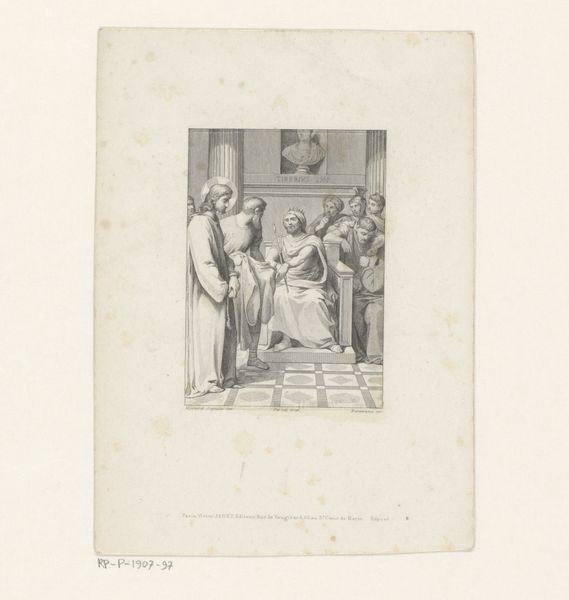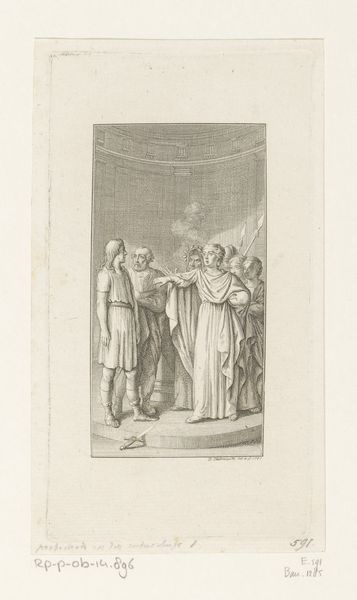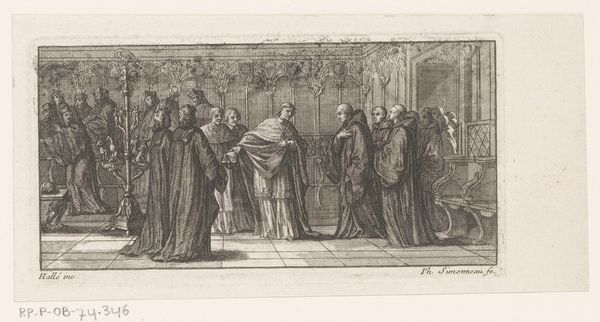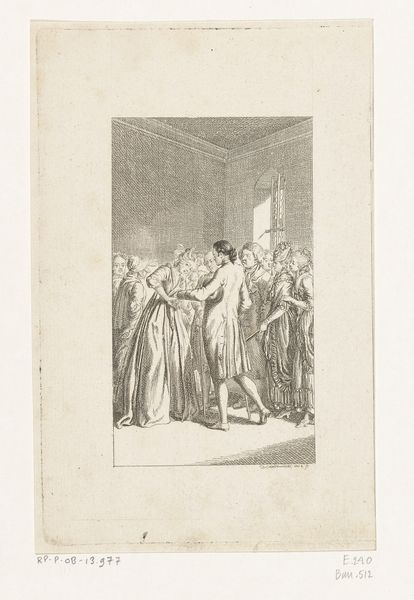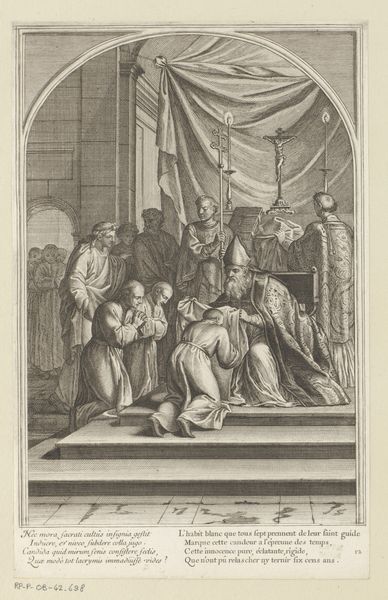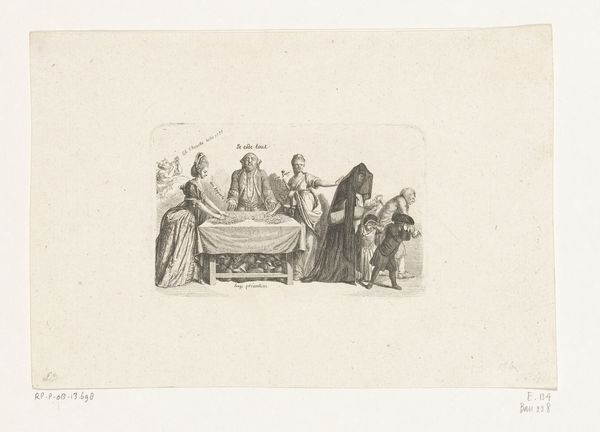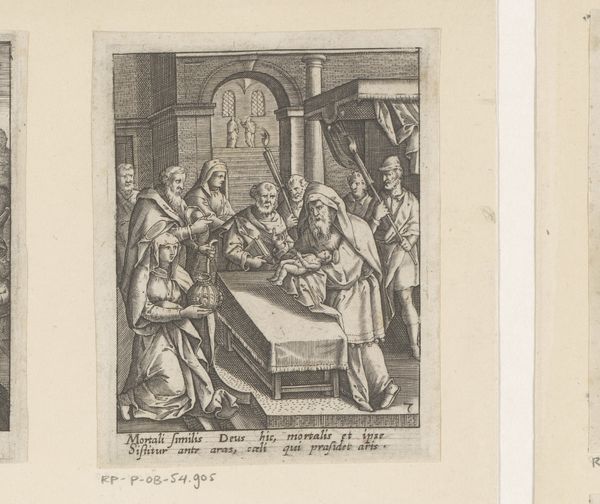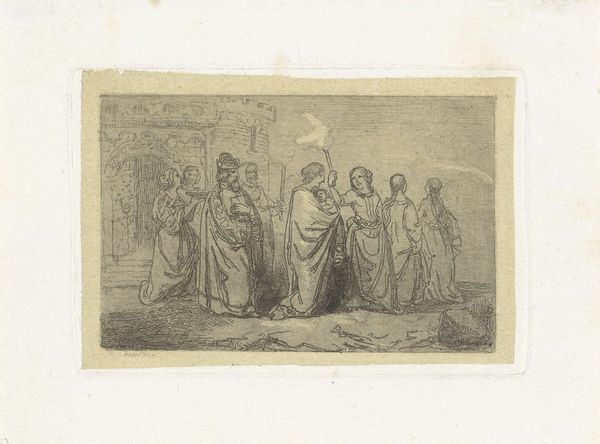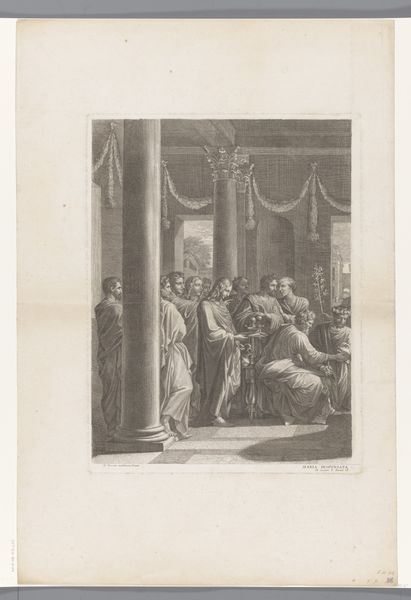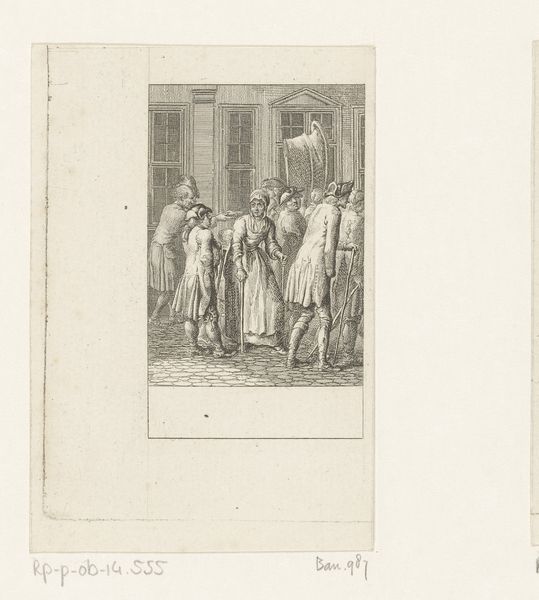
print, engraving
# print
#
line
#
history-painting
#
northern-renaissance
#
engraving
Dimensions: height 121 mm, width 76 mm
Copyright: Rijks Museum: Open Domain
Editor: Here we have Daniel Nikolaus Chodowiecki’s 1790 engraving, "Sigismund wordt gekroond," housed at the Rijksmuseum. The detail achieved with the line engraving technique is incredible. What’s particularly striking to me is the rendering of textiles. What draws your attention in this print? Curator: Let’s consider the materials involved. An engraving requires specific tools, a metal plate, ink, and paper. This reproductive process democratized the image, making the spectacle of Sigismund’s coronation accessible beyond the elite circles who might have witnessed the event firsthand. How does the mass production affect our understanding of the work? Editor: I guess I hadn’t considered that aspect. The choice to make it accessible shifts my perception of the intention behind its creation. It’s not just about documenting history but distributing a particular version of it to the masses, which affects the means of its consumption. Curator: Precisely. It is a carefully manufactured object created with particular materials to evoke a response. Consider, also, how this print would have been circulated and consumed. Who were the intended audiences? And what relationship did they have to depictions of royal ceremony? Editor: Possibly the rising merchant class. Ownership of such an image might indicate an aspiration towards upward mobility. Curator: Yes, the act of purchasing and displaying an engraving like this can also be seen as a form of consumption – and a display of access to the means of distribution themselves. The work then, embodies ideas of status, power, and circulation of the King and the society reflected through those items. Editor: That’s such an insightful viewpoint. Thinking about the materials and production really changes how I interpret the image. It highlights how interwoven social dynamics, consumerism and artistry truly are. Curator: Exactly! Material considerations can open up fascinating new ways to analyze even seemingly straightforward historical depictions.
Comments
No comments
Be the first to comment and join the conversation on the ultimate creative platform.
